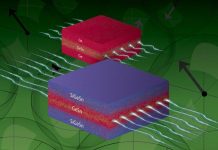
“Magic Polymers” pull water from thin air with less energy
Scientists from Osaka Metropolitan University have developed a clever way to harvest water from the air more efficiently, using a new polymer solution that requires less heat to work.
This breakthrough could make it easier to collect water in dry areas, during disasters, or in places with limited energy resources.
The findings were recently published in ACS ES&T Water.
Water-harvesting materials like special polymers are already used to pull water out of humid air and for air conditioning systems that reduce humidity.
However, one big challenge has been “desorption”—the process of releasing the collected water so the material can be reused.
Typically, this process requires heating the material to about 100°C, which uses a lot of energy.
A research team led by graduate student Daisuke Ikegawa, Assistant Professor Arisa Fukatsu, Associate Professor Kenji Okada, and Professor Masahide Takahashi has now developed a solution that works at just 35°C, saving significant amounts of energy.
The team created a liquid moisture-adsorbent using special polymers to achieve this.
The key to their success lies in using “random copolymers,” a mix of two different types of molecules: polyethylene glycol and polypropylene glycol.
Polyethylene glycol is excellent at absorbing water, while polypropylene glycol is a little less water-loving.
The difference between the two creates a “water transfer mechanism” that breaks apart water clusters, making it much easier to release the water with less heat.
“This technology has the potential to provide water to dry regions or areas with limited energy, as well as during disasters and emergencies,” explained Dr. Fukatsu.
Professor Takahashi added, “Improving this technology could also reduce greenhouse gas emissions and make water usage more efficient. Our next steps are to enhance the liquid adsorbent and optimize the entire system to make it practical for everyday use.”
Access to clean water is a major challenge for many parts of the world, especially in arid regions. Finding ways to efficiently harvest water from the air can help address water scarcity and make life easier in areas with little access to fresh water.
Lowering the energy needed for the process also helps reduce the environmental impact, making this solution sustainable.
With further improvements, this technology could be a game-changer for solving water challenges worldwide, offering a greener, more energy-efficient way to meet humanity’s water needs.



